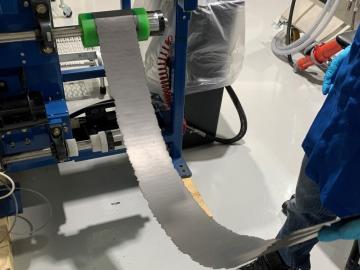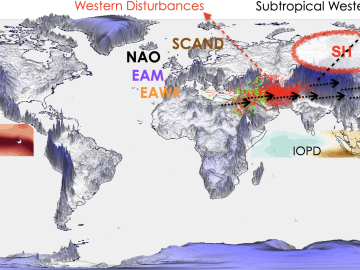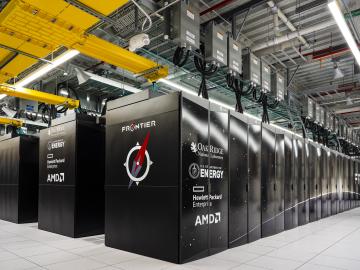
Filter News
Area of Research
News Type
News Topics
- (-) 3-D Printing/Advanced Manufacturing (15)
- (-) Composites (4)
- (-) Cybersecurity (9)
- (-) Energy Storage (14)
- (-) Frontier (17)
- (-) Grid (13)
- (-) Isotopes (9)
- (-) Space Exploration (4)
- Advanced Reactors (2)
- Artificial Intelligence (25)
- Big Data (9)
- Bioenergy (14)
- Biology (23)
- Biomedical (5)
- Biotechnology (4)
- Buildings (9)
- Chemical Sciences (18)
- Clean Water (5)
- Computer Science (19)
- Coronavirus (3)
- Critical Materials (2)
- Education (3)
- Emergency (1)
- Environment (36)
- Exascale Computing (14)
- Fossil Energy (2)
- Fusion (9)
- High-Performance Computing (31)
- Hydropower (2)
- Machine Learning (14)
- Materials (49)
- Materials Science (14)
- Mathematics (2)
- Mercury (1)
- Microelectronics (2)
- Microscopy (7)
- Molten Salt (1)
- Nanotechnology (6)
- National Security (19)
- Neutron Science (27)
- Nuclear Energy (19)
- Partnerships (24)
- Physics (14)
- Polymers (3)
- Quantum Computing (9)
- Quantum Science (7)
- Security (3)
- Simulation (26)
- Software (1)
- Summit (9)
- Transportation (9)
Media Contacts

Wildfires have shaped the environment for millennia, but they are increasing in frequency, range and intensity in response to a hotter climate. The phenomenon is being incorporated into high-resolution simulations of the Earth’s climate by scientists at the Department of Energy’s Oak Ridge National Laboratory, with a mission to better understand and predict environmental change.

Early experiments at the Department of Energy’s Oak Ridge National Laboratory have revealed significant benefits to a dry battery manufacturing process. This eliminates the use of solvents and is more affordable, while showing promise for delivering a battery that is durable, less weighed down by inactive elements, and able to maintain a high capacity after use.

As extreme weather devastates communities worldwide, scientists are using modeling and simulation to understand how climate change impacts the frequency and intensity of these events. Although long-term climate projections and models are important, they are less helpful for short-term prediction of extreme weather that may rapidly displace thousands of people or require emergency aid.

With the world’s first exascale supercomputer now fully open for scientific business, researchers can thank the early users who helped get the machine up to speed.

Researchers at the Department of Energy’s Oak Ridge National Laboratory are supporting the grid by improving its smallest building blocks: power modules that act as digital switches.

Tristen Mullins enjoys the hidden side of computers. As a signals processing engineer for ORNL, she tries to uncover information hidden in components used on the nation’s power grid — information that may be susceptible to cyberattacks.

Scientist-inventors from ORNL will present seven new technologies during the Technology Innovation Showcase on Friday, July 14, from 8 a.m.–4 p.m. at the Joint Institute for Computational Sciences on ORNL’s campus.

To support the development of a revolutionary new open fan engine architecture for the future of flight, GE Aerospace has run simulations using the world’s fastest supercomputer capable of crunching data in excess of exascale speed, or more than a quintillion calculations per second.

Simulations performed on the Summit supercomputer at ORNL revealed new insights into the role of turbulence in mixing fluids and could open new possibilities for projecting climate change and studying fluid dynamics.

Innovations in artificial intelligence are rapidly shaping our world, from virtual assistants and chatbots to self-driving cars and automated manufacturing.


